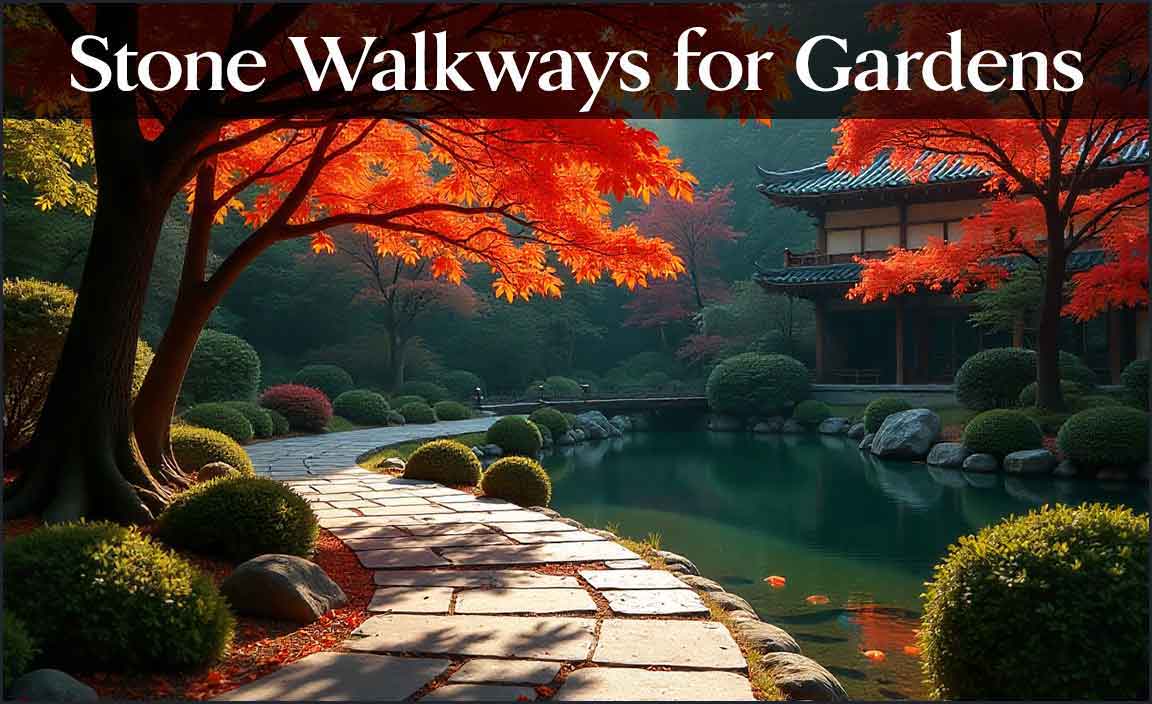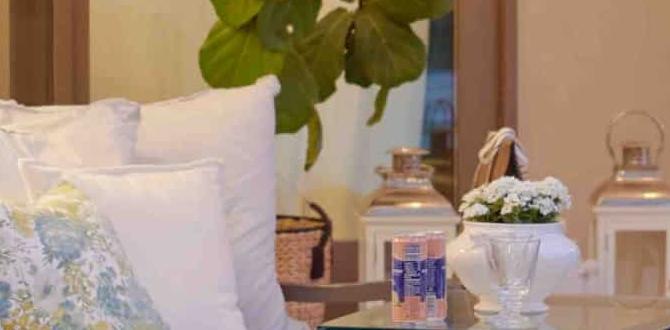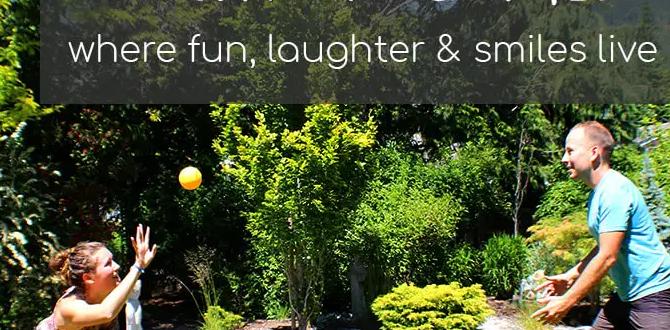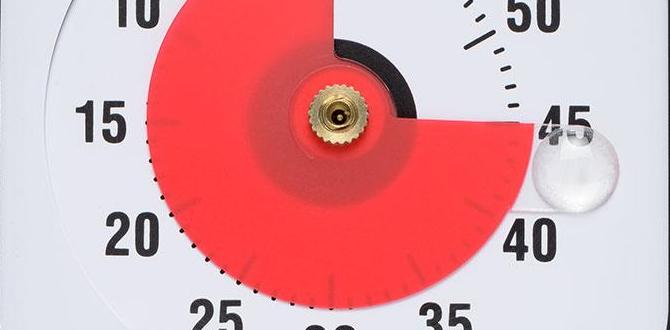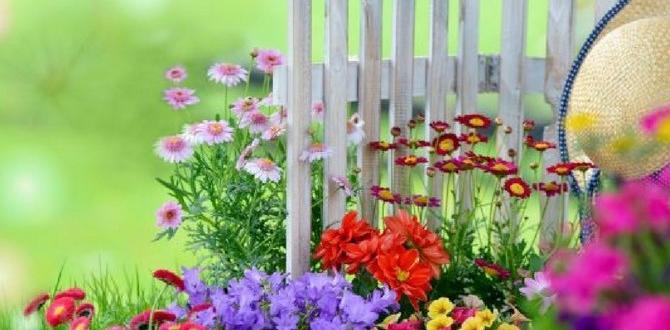Discover essential and stunning garden fence ideas to beautify and protect your outdoor space. From rustic wood to modern metal, find the perfect design to suit your style and needs, enhancing your garden’s appeal and functionality.
Are you dreaming of a beautiful garden but worried about keeping pets out or defining your space? A fence can do so much more than just mark a boundary. It can be a stunning feature that complements your plants, adds privacy, and even supports climbing vines. Many beginner gardeners feel overwhelmed by fence choices, wondering what’s practical, affordable, and looks good. Don’t let it stop you! We’ll walk through some delightful garden fence ideas that are both essential for function and beautiful for form. Get ready to transform your garden’s edge into a charming focal point.
Why Your Garden Needs a Fence (Beyond Just Boundaries)
A garden fence is often the first thing people notice about your outdoor space, acting as a frame for your beautiful plants. But its role goes far deeper than just aesthetics. For beginner gardeners, understanding these functions can help in choosing the right design.
Protection: Fences keep out unwanted visitors, whether they’re curious neighborhood pets, deer, or rabbits. This is crucial for protecting delicate seedlings and growing vegetables.
Privacy: If your garden is near a busy street or nosy neighbors, a well-chosen fence can create a secluded sanctuary where you can relax and enjoy your greenery in peace.
Structure and Support: Many fences provide excellent vertical support for climbing plants like roses, clematis, or even small fruit vines, adding layers of beauty and functionality.
Defining Space: A fence clearly delineates your garden area, giving it a sense of purpose and making it feel more intentional and polished.
Aesthetic Appeal: As we’ll explore, fences can be gorgeous design elements, adding texture, color, and architectural interest to your garden.
Choosing the Right Garden Fence: Key Considerations
Before diving into specific garden fence ideas, let’s think about what’s important for your garden. Considering these factors will help you make the best choice.
1. Purpose: What Do You Need Your Fence To Do?
Containment: Is it primarily for pets, children, or preventing larger wildlife like deer from entering? This often dictates height and spacing of pickets.
Privacy: Do you need to block views from neighbors or the street? Taller, solid fences or dense hedges (which can be grown with fence support) are ideal.
Decoration: Is the fence intended to be a beautiful backdrop or accent? Styles like lattice or decorative metal can shine here.
Support for Plants: Are you planning to grow climbing flowers or vegetables? A fence with horizontal or lattice elements will be perfect.
2. Style: Matching Your Home and Garden
Think about the overall look you want to achieve. Do you have a modern home that needs clean lines, or a cozy cottage that calls for a rustic feel?
Rustic/Country: Natural wood, picket fences, stone walls.
Modern/Contemporary: Metal, composite materials, clean horizontal lines, glass panels.
Traditional: Classic wood picket, ornate metalwork.
Cottage Garden: Woven willow, low picket fences, mixed materials.
3. Materials: Durability, Cost, and Maintenance
The material you choose will impact the fence’s lifespan, cost, and how much upkeep it requires.
Wood: Versatile, natural, can be painted or stained. Requires regular maintenance to prevent rot and pest damage.
Vinyl/PVC: Low maintenance, durable, comes in various styles and colors. Can be more expensive upfront.
Metal (Wrought Iron, Aluminum, Steel): Elegant, strong, can be ornate or modern. Wrought iron requires rust prevention. Aluminum is lightweight and rust-resistant.
Composite: Made from a mix of recycled plastics and wood fibers. Durable, low maintenance, eco-friendly. Can be heavier and more costly.
Bamboo/Willow: Natural, eco-friendly, offers a rustic or tropical feel. Durability varies; may need replacement sooner.
4. Budget: Balancing Wants and Needs
Fencing can range from very affordable DIY options to significant investments. Be realistic about what you can spend.
Budget-Friendly: Simple wooden stakes with wire mesh, basic picket fences, DIY bamboo screens.
Mid-Range: Standard wood panel fences, treated lumber picket fences, basic vinyl.
High-End: Ornamental wrought iron, custom-designed fences, premium composite materials.
5. Local Regulations: HOA and Permits
Before you start digging, check with your local municipality or Homeowners Association (HOA) for any restrictions on fence height, style, or material. Getting this information upfront can save a lot of headaches later.
Essential & Stunning Garden Fence Ideas for Every Style
Now for the fun part! Let’s explore some popular and beautiful garden fence ideas.
1. The Classic Picket Fence
A timeless choice, the picket fence evokes images of charming cottage gardens and family-friendly yards.
Description: Typically made of wood (pine, cedar, redwood), featuring evenly spaced vertical pickets attached to horizontal rails. The tops of the pickets can be pointed, flat, rounded, or decorative.
Best For: Defining garden beds, front yards, creating a quaint aesthetic, keeping small pets contained.
Pros:
Classic, picturesque look.
Relatively affordable and easy to install (DIY-friendly).
Available in various heights.
Allows for air circulation.
Cons:
Requires regular maintenance (painting/staining, repairs) to prevent rot and weathering.
May not offer much privacy.
Small gaps can allow very small animals or slugs through.
Variations:
Dog Ear Picket: Features pickets with a pointed, dog-ear shape at the top.
Gothic Picket: Pickets have a more elaborate, rounded top with a pointed arch.
Shadowbox Picket: Pickets are alternately attached to the front and back of the rails, offering more privacy while still allowing some airflow.
Material Focus: Cedar and redwood are naturally resistant to rot and insects, making them excellent, though pricier, choices for longevity. Pine is more budget-friendly but requires vigilant sealing. For a low-maintenance alternative, consider vinyl picket fences.
For those considering wood, proper sealing and staining are key to longevity. Resources like the US Forest Service offer excellent guidelines on wood preservation techniques.
2. The Practical Privacy Fence
When you crave seclusion, the privacy fence is your go-to solution.
Description: Solid panels of wood, vinyl, or composite that completely block the view. They are usually taller than other fence types.
Best For: Backyards, creating secluded patios or seating areas, blocking unsightly views, providing maximum security.
Pros:
Offers complete privacy.
Blocks wind and noise.
Can be very secure.
Available in wood, vinyl, and composite.
Cons:
Can feel imposing or block light.
May require more structural support.
Less airflow can increase humidity against the fence.
Can be more expensive.
Variations:
Board-on-Board: Offers a more textured look by overlapping vertical boards.
Solid Panel: Simple, clean lines with no gaps.
Trellis Top Privacy: Combines solid panels with a decorative trellis section at the top for added visual interest and a place for climbers.
Maintenance: Vinyl and composite privacy fences are virtually maintenance-free. Wood privacy fences require regular staining or sealing to prevent warping, cracking, and rot.
3. The Rustic Charm of Lattice Fencing
Lattice fences are versatile and add a touch of delicate beauty, perfect for supporting your climbing plants.
Description: Made from intersecting strips of wood or vinyl, forming a grid pattern. It can be used as full fence panels or as decorative toppers.
Best For: Decorative borders, supporting climbing plants (roses, clematis, jasmine), adding elegance to pergolas or arbors, creating semi-private screens.
Pros:
Light and airy appearance.
Excellent support for climbing plants.
Adds visual interest and charm.
Allows light and air to pass through.
Cons:
Offers very little privacy or security.
Wood lattice can be prone to rot if not maintained.
Can be damaged by strong winds if not sturdy.
Variations:
Square Lattice: The most common type with diagonal wood strips creating square openings.
Diamond Lattice: Features diagonal wood strips forming diamond shapes.
Privacy Lattice: Lattice with smaller openings or vinyl infills for added privacy.
DIY Element: Lattice can be purchased in pre-made panels or you can create your own pattern from individual wood strips for a custom look. Ensure tight intersections in DIY versions for better lifespan.
4. The Modern Elegance of Metal Fencing
Metal fences offer durability, security, and a sleek aesthetic that suits contemporary homes.
Description: Crafted from materials like wrought iron, aluminum, or steel, often featuring clean lines, geometric patterns, or decorative scrollwork.
Best For: Modern or minimalist gardens, security, defining property lines with a sophisticated look, properties with swimming pools (specific codes apply).
Pros:
Durable and long-lasting.
Low maintenance (especially aluminum and powder-coated steel).
Can be very secure.
Offers an elegant, upscale appearance.
Allows excellent visibility and airflow.
Cons:
Can be expensive, especially wrought iron.
Wrought iron requires rust treatment.
May not offer privacy unless styles are very close together.
Can be heavy to install.
Variations:
Wrought Iron: Classic, often ornate, requires ongoing rust prevention.
Aluminum: Lightweight, rust-proof, often used for pool fences and decorative borders.
Steel: Strong, can be powder-coated for protection and color variety.
Wire Mesh/Chain Link (with an upgrade): While basic, incorporating decorative caps or painting can elevate this utilitarian option.
Investing in Quality: For ultimate durability and low maintenance, consider powder-coated aluminum or steel. These finishes resist corrosion and fading exceptionally well.
5. The Natural Touch of Bamboo Fencing
Bamboo fences bring an exotic, eco-friendly vibe to your garden.
Description: Made from compressed bamboo poles or woven bamboo reeds. Available in rolls or panels. Commonly used for screening or as a decorative backdrop.
Best For: Tropical or Asian-inspired gardens, privacy screens, covering unsightly features, adding natural texture.
Pros:
Eco-friendly and sustainable resource.
Unique, natural aesthetic.
Relatively affordable and easy to install (roll fencing).
Provides good screening.
Cons:
Durability can vary depending on quality and treatment.
May not withstand extreme weather conditions well.
Requires sealing or treatment for longevity, especially in damp climates.
Can be prone to insect damage if not treated.
Installation Tip: Bamboo rolls are often attached to existing posts or sturdy frames using zip ties or wire for a secure fit. For panel fencing, ensure proper ground contact protection to prevent rot.
Maintaining bamboo’s natural beauty often involves applying a sealant. Recommendations from manufacturers often suggest oil-based sealants for best penetration and protection against UV rays and moisture.
6. The Charming Willow or Woven Fence
These natural fences offer a rustic and charming feel, perfect for informal gardens.
Description: Constructed from flexible branches, often willow or hazel, woven together around stakes. Available in rolls or pre-made panels.
Best For: Country gardens, cottage gardens, naturalistic landscapes, creating borders.
Pros:
Beautiful, rustic, and natural look.
Eco-friendly material.
Adds unique texture.
Relatively lightweight and easy to install.
Cons:
Less durable than wood or vinyl; may need replacement every few years.
Offers little security or privacy.
Can be susceptible to rot and pests.
DIY Potential: Weaving your own willow fence can be a rewarding project if you have access to suitable branches and a bit of patience!
7. The Functional Dry Stone Wall
For a timeless, robust, and incredibly natural barrier, a dry stone wall is unparalleled.
Description: A wall built without mortar, relying on the careful placement and interlocking of stones to create stability.
Best For: Formal landscaping, country gardens, dividing large areas, providing habitat for beneficial insects and small creatures.
Pros:
Extremely durable and long-lasting.
Requires no maintenance once built correctly.
Unique, natural aesthetic.
Environmentally friendly (uses natural materials).
Provides habitat for wildlife.
Cons:
Requires significant skill and labor to build.
Can be very expensive due to labor and material sourcing.
Offers no privacy or security in the traditional sense.
Can be a tripping hazard if the top is uneven.
Expertise Needed: Building a stable dry stone wall requires knowledge of stone selection and placement. Consulting with or hiring a dry stone mason is highly recommended for larger projects.
8. The Playful Pallet Fence
A budget-friendly and eco-conscious option for those who love a DIY challenge.
Description: Constructed from repurposed wooden shipping pallets. Can be used as individual panels or joined together.
Best For: Rustic or bohemian gardens, temporary fencing, budget projects, creative upcycling.
Pros:
Extremely affordable, often free if you can source used pallets.
Eco-friendly (upcycling).
Unique, rustic look.
Can be customized with paint or other additions.
Cons:
Requires significant preparation (sanding, sealing, potential disassembly).
Wood quality can vary, affecting durability.
May have gaps that offer little privacy.
Pallets can be heavy and difficult to maneuver.
Safety First: Always ensure that pallets are heat-treated (marked “HT”) and not chemically treated (“MB” for methyl bromide fumigation, which can be toxic) before using them in your garden.
Creative Touches to Elevate Your Garden Fence
Once you have your basic fence structure, you can add personal touches to make it truly unique.
Add Climbing Plants: As mentioned, lattice tops or wire frames are perfect for roses, honeysuckle, jasmine, or even small fruiting vines like peas and beans.
Incorporate Lighting: Solar-powered lights attached to posts or string lights along the fence can create a magical evening ambiance.
Paint or Stain: A fresh coat of paint or stain can completely transform the look of a wooden fence, matching it to your home or garden color scheme.
Add Decorative Elements: Small birdhouses, wind chimes, or decorative finials can add personality.
Mix Materials: Combine a solid base with a lattice top, or use different fence styles in sections to break up repetition.
DIY vs. Professional Installation: Making the Choice
A significant factor in choosing garden fence ideas is deciding whether to tackle the installation yourself or hire a professional.
Table: DIY vs. Professional Fence Installation
| Feature | DIY Installation | Professional Installation |
| :————— | :——————————————————– | :——————————————————- |
| Cost | Lower material costs, no labor charges. | Higher due to labor, potentially higher material markups. |
| Time Commitment| Significant time investment for planning, prep, and labor. | Much faster, usually completed within a few days. |
| Skill Level | Requires basic carpentry, measuring, and digging skills. | Requires specialized knowledge for structural integrity. |
| Tools | Basic home improvement tools needed. | Professionals bring specialized equipment. |
| Quality/Longevity| Can be excellent if done correctly; potential for errors. | Generally higher quality and longer lifespan due to expertise. |
| Stress Level | Can be rewarding but also frustrating and physically demanding. | Less stress for the homeowner; contractor manages the build. |
When to DIY:
Simple fencing styles (e.g., basic picket, roll bamboo/willow).
You have tools, time, and enjoy hands-on projects.
Budget is a primary concern.
You’re comfortable learning new skills.
When to Hire a Pro:
Complex or very tall fences (privacy, security).
Metal fences or stone walls requiring specialized skills.
Tight deadlines or limited physical capacity.
You want a long-lasting, high-quality installation guaranteed.
* Local regulations require professional installation.
For areas where precise alignment and structural integrity are critical, consulting with a local fence contractor is often the best path. They can also navigate any necessary permits.
Frequently Asked Questions About Garden Fencing
Q1: How tall should my garden fence be?
A1:


